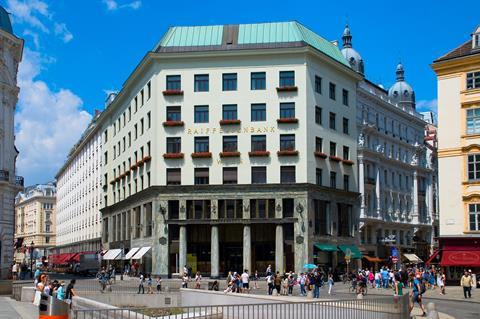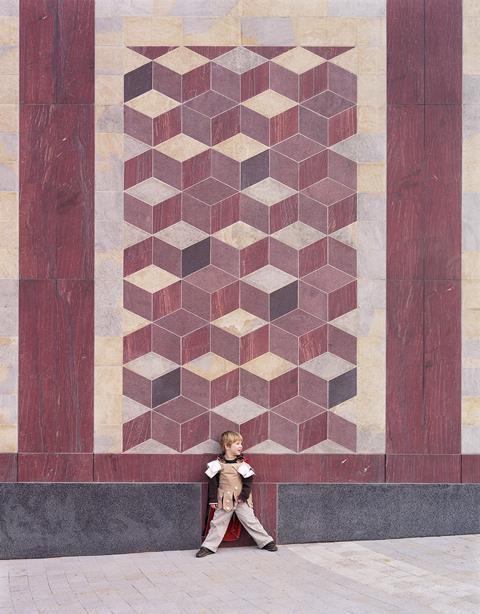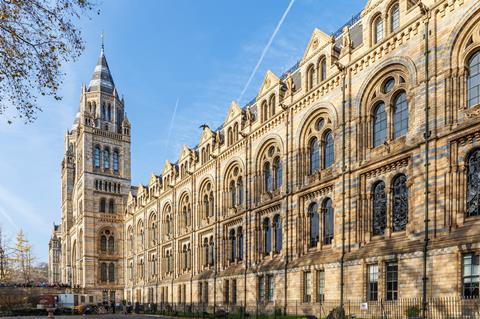Modernism’s stripped back aesthetic could be seen as inclusive, but is it actually an impediment to diversity, asks Ben Flatman

The human urge to add ornament to buildings – and indeed our own bodies – goes back millennia, and is evident in a wide range of different cultures. In many architectural traditions ornament conveyed important symbolism and a deeper artistic significance.
In the hands of adept designers, it was often an integral part of the articulation of materials and the cultural vocabulary of architecture – used to provide relief, shadow, meaning and sometimes humour.
And yet from the late 19th-century onwards, the Western architectural tradition increasingly coalesced around a belief that ornament on buildings was not just to be discouraged, but was perhaps even immoral.
Louis Sullivan was highly skilled in architectural ornamentation, and had a huge influence on Frank Lloyd Wright’s often highly ornate early buildings. But, in 1892, Sullivan wrote that “it would be greatly for our aesthetic good if we should refrain entirely from the use of ornament for a period of years”.
He was articulating a growing view at the time that architectural ornamentation had become debased by the overblown historicism of much 19th-century design.

By the early 20th century, Adolf Loos had gone a step further, decreeing that ornament was a “crime”. In his famous 1913 essay Ornament and Crime, Loos not only condemned ornamentation in design but linked it to a perceived cultural degeneracy.
Loos argued that ornamentation was a sign of societal backwardness, drawing dubious connections between the urge to create ornamentation and criminal behaviour. This theoretical stance carried undertones of social Darwinism.
Perhaps rather ironically, Loos’s own Raiffeisen Bank in Vienna was not entirely devoid of ornament. And some interpretations of Loos argue that his rhetorical flourishes concealed a more nuanced view – that rather than wishing to see ornament outlawed outright, he believed it was valid only if it had contemporary meaning and cultural relevance.
At an event last year hosted by Donald Insall Associates titled Diversity and Continuity: Exploring London as an Architectural Melting Pot, a panel were invited to “trace the idea of global aesthetics through ornament”. Several speakers questioned the rejection of ornament in modernism, and some asked whether its absence was not in fact a barrier to greater pluralism and diversity in architecture.
Bartlett lecturer Oliver Domeisen was unequivocal, describing Loos as a “fascist” and wondering why the dominant tradition in architectural education and practice still rejected ornament, even as “the figurative has returned in every other art form”. Architects still wedded to modernism’s unadorned aesthetic were “clinging to a sinking ship”, he argued.

Although Mies’s placement of Georg Kolbe’s Dawn sculpture in the Barcelona Pavilion established the now ubiquitous modernist trope of the standalone figurative or abstract artwork within a minimalist setting, very few architects now seek to integrate ornament into the fabric of their buildings. Commissioning artists to supply murals, friezes or isolated sculptures is deemed acceptable, but for architects themselves to seek to articulate or embellish their own buildings through ornament remains rare.
In the minds of modernists, ornament is traditionally seen as an anachronistic deceit – concealing true form and function. But it was of course Mies himself who famously applied non-structural bronze-toned I-beams to the exterior of the Seagram Building to articulate the elevations and express the “truth” of the concrete-covered steel frame beneath. As architectural historian William JR Curtis put it: “Mies ‘lied in order to tell the truth’.”
Today, ornament in architecture makes occasional, rather apologetic appearances. Although wilful design flourishes and creative form-making abound, applied ornament is uncommon. It is largely seen as the territory of eccentric traditionalists, or modernists deemed at risk of losing their way. When adherents to modernism do diverge from its narrow theoretical and aesthetic guardrails, they do so at their peril.

The result of this self-imposed ban is that even the most restrained expressions of ornamentation are often met with incredulity within the profession. When Adam Caruso and Peter St John unveiled their new entrance to the V&A’s Museum of Childhood (now the Young V&A) in 2006, their simple geometric patterned elevations of red and brown stonework were treated as if they were a shocking step into contested territory.
Writing in BD at the time, Hugh Pearman welcomed Caruso St John’s “provocative ornamentalism”, stating that “only a few years ago, such a building as this would have been either impossible, or laughed to scorn, in Britain”.
>> Also read: Hugh Pearman reviews Caruso St John’s V&A Museum of Childhood extension
And yet, almost two decades on, architecture’s supposed re-engagement with ornament that Caruso St John’s work seemed to herald remains fitful. Rare exceptions, such as Feilden Fowles’s use of faïence for the new dining hall for Homerton College in Cambridge, do crop up occasionally. But the majority of architects seem disinclined or perhaps lacking in the confidence to embrace ornament wholeheartedly.
Does this matter? Louis Sullivan’s desire was for architects to relearn the fundamentals of their art, before then returning to ornament. Is it not now overdue for architecture schools and practices to reembrace ornament as an integral part of diverse forms of practice?
>> Also read: Homerton College Dining Hall by Feilden Fowles
Could the prevailing culture in architecture, which still largely disdains applied ornament on elevations and in interiors, actually be a factor that contributes to excluding some groups and individuals from pursuing a career in architecture or engaging fully with the built environment?
There is plenty of evidence to suggest that, while attitudes to modernism have mellowed, many people are still attracted to historical and vernacular styles of architecture, and appreciate ornament. Architects often discuss the merits of co-design but, if they reject ornament out of hand, how equipped are they to truly engage with the full diversity of stakeholders and range of aesthetic dispositions that exist?
Are we really to believe that every community engagement project organically leads to a modernist design outcome, or are many architects imposing a century of deeply ingrained – not to say “Eurocentric” – aesthetic assumptions on their co-designers without even realising it? It is almost as if the profession was saying, “you can have any kind of architecture you want, as long as it’s modernism”.
Perhaps part of the problem is that, while it was relatively straightforward for architects to discard the skills required to conceive of and convincingly apply architectural ornament, it is very much harder to relearn what has been lost. And modernism’s near-universal adoption in architecture schools around the world has ensured that ornament has now effectively disappeared from mainstream architectural discourses globally.

Another speaker at last year’s Diversity and Continuity discussion, the London School of Architecture’s Neal Shasore, explained how the 19th century was “very in” among his students. They were, he said, “very interested” in Victorian architects such as Alfred Waterhouse and William Lethaby. And yet, when it came to ornament in their own designs, they struggled with “how to apply it”.
A further complication is of course the challenge of identifying an architectural language of ornamentation that is not itself seen as divisive or exclusionary. Shasore illustrated this point by referencing the Dominion Screen, situated in RIBA’s Portland Place HQ.
As RIBA’s own website notes, the screen was “intended to be celebratory, but with modern awareness of colonial legacies its exploitation of natural resources and primitivist depictions feel problematic”.
Assemble’s Jane Hall has raised similar concerns, highlighting the way in which architectural ornament has historically often meant “an intimidating layer of meaning dictated by someone else”.
And yet the legacy of Loos and his enduring ideology is also arguably problematic. As Oliver Domeisen observed, it can feel like many architects remain unwittingly constrained by theoretical frameworks that originated more than a century ago, in an intellectual context that we now regard, at least in part, as rather dubious.
Could it be, as some have claimed, that modernism’s dominance (and adoption as the house style of global capitalism) has contributed to the effective sidelining and exclusion of other cultural traditions and ways of seeing architecture?

And does the largely unquestioned acceptance of modernist principles, divorced from their sometimes troubling origins, perpetuate a form of intellectual inertia that hinders the evolution of architectural thought?
Although contemporary practitioners such as Charles Holland and Sam Jacob have long made the case for the importance of ornament – and popular taste – in architecture, their views remain marginal, often dismissed as quaintly post-modern.
Despite what briefly seemed like postmodernism’s breaking of these theoretical and aesthetic constraints, most architects working today seem uninterested in exploring the potential for pushing the boundaries of architectural expression through ornament. The deeply ingrained belief that ornamentation is synonymous with backwardness persists, arguably limiting the scope for exploration of diverse design approaches.
Is it possible that this renewed reluctance to question the ideological foundations of modernism inhibits the development of more inclusive and culturally sensitive architectural practices. Perhaps its beyond time for architects to really loosen up and reengage with architecture’s huge potential to explore meaning through ornament.
















4 Readers' comments